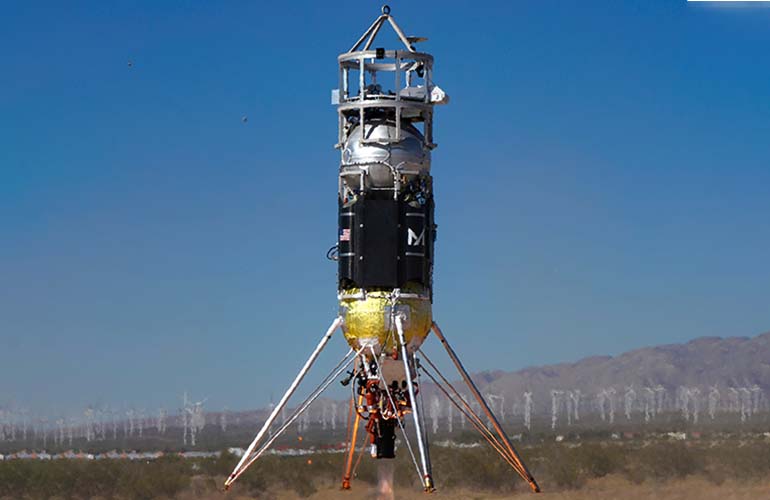|
Listen to this article  |

Astrobotic’s acquisition of Masten Space Systems brings the company heritage of over 600 vertical test flights and landings.
Astrobotic has acquired Masten Space Systems along with its entire portfolio of advanced space technology developed over 18 years of operation for $4.5 million. Masten has completed more than 600 vertical takeoff and landing (VTVL) rocket flights since its founding in 2004.
Masten has testing infrastructure for a range of different rocket technologies, from single-element injector testing to 25,000-pound thrust rocket engine testing to landing simulation testing. It also has a portfolio of space technology, which includes technologies for lunar night survival, instant landing pad construction, lunar water mining technology and lunar infrastructure construction technologies.
The company has aided in NASA’s Flight Opportunities Program by providing flights to NASA-sponsored payloads to prepare them for spaceflight since 2011. Masten has also flown payloads for current and future lunar and interplanetary missions, including Astrobotic’s OPAL terrain relative navigation system, Honeybee Robotics’ PlanetVac system and NASA’s Jet Propulsion Laboratory’s lander vision system for the Mars Curiosity mission.
The combined companies’ more than 200 employees will continue operating in Pittsburgh, where Astrobotic is headquartered, and at the Mojave Air and Space Port in California. Astrobotic plans to maintain suborbital flight operations at Masten’s testing sites at Mojave. It also plans to continue offering the space industry a testing site for hot fire rockets.
The Masten team will continue to provide VTVL test flights for its commercial and government customers, which include big names like NASA and SpaceX. Astrobotic even plans to expand its test flight offerings with the development of the Xogdor rocket. With this rocket, the combined companies plan to offer higher altitudes, longer missions and supersonic flight for suborbital payload testing.
“I started Masten with the goal of tearing down barriers to space,” David Masten, Masten’s founder and president, said. “On behalf of the Masten team, I am excited to join Astrobotic in our shared mission to make space accessible to the world. This combined organization will let us continue to provide important services to our customers and help us make a bigger impact on humanity’s future in space.”
Masten Space Systems filed for Chapter 11 bankruptcy protection in July 2022. The space company declared bankruptcy as its debts ballooned, tracing back to a NASA contract awarded to Masten two years ago. Once seen as a major win for the small business, the NASA deal left Masten over budget, and it was unable to raise funds or pay employees.
“Masten’s suborbital launch vehicles and propulsion test centers are national assets for the space industry. We are excited to operate and expand these services for companies, governments, and space agencies internationally,” Astrobotic CEO John Thornton said. “Bringing these services to Astrobotic is a natural fit for our mission to make space accessible to the world.”
These new technologies complement Astrobotic’s existing technologies, which include landers, rovers and other space technology. The company is currently preparing its Peregrine Lunar Lander for launch in late 2022. The lander includes several payloads, including CMU’s Iris Rover, which would be the first American rover on the moon, and five micro-robots from the National Autonomous University of Mexico, which will make it the first Mexican mission to the moon.
Credit: Source link


Comments are closed.